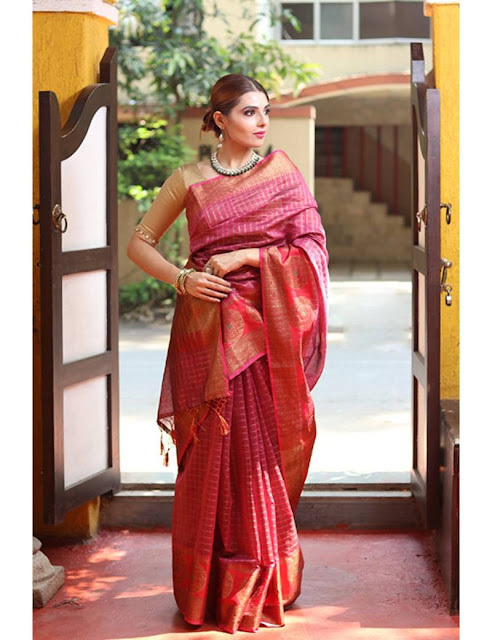Kalamkari Saree - A Fine Display of Ancient Indian Art
Kalamkari
is an ancient Indian art practiced
in Andhra Pradesh and Telangana. This ancient art was originated around
3000 years ago. This art
is initially done on cotton fabric but nowadays
it has gained popularity on
silk fabrics. Kalamkari
art form
is basically used to make Kalamkari sarees. An unique painting
of Kalamkari sarees has made popular
around the world especially among women. Kalamkari sarees depict the craftsmanship
done with a tamarind pen. These layers are done one over the other and involve
around twenty-three steps of dyeing. You can buy elegant Kalamkari sarees and
show off your tradition with poise.
With
a culture loaded with stories orally recited for large audiences, over time,
this art was taken to canvas and took form as the kalamkari. Historians also
say that these were found in the Mohenjo Daro, a famous archaeological site.
The
sarees got recognition with the Mughals who promoted it in the Golconda and
Coromandel provinces. This garnered more artisans employing in style and,
hence, the style evolved. Under the Golconda rule, it flourished in
Machilipatnam in Krishna district of Andhra Pradesh and further was promoted
during the 18th century where it took the form of clothing.
Families
in Andhra still practice this art form and is now a popular saree style in
the entire country. Due to its unique depictions of the ethics, it also adds a
cultural and ethnic touch to the clothing almost like one is wearing her
culture with the pride of being an Indian and upholding the culture.
The
art is also time-consuming and requires a meticulous procedure involving
twenty-three steps from bleaching the fabric, softening it to the drying and
washing.
Types of Kalamkari Sarees
There
are two known styles of kalamkari being Srikalahasti style and Machilipatnam style.
In the former, a painting of the Hindu mythology with scenes of epics and
folklore are depicted. The latter, however, employs the use of hand-carved
traditional blocks that have intricate detailing.
The
tradition in Andhra borrows inspiration from temples, art, statues and murals
in forts and palaces. Even motifs of animals and birds are valued the same way.
However, Kalamkari in Gujarat sticks to the traditional style of using
mythological characters and important characters from folktales as well. These
variations keep the style lively and artistic, evolving with the times.
As
Kalamkari involves printing with a tamarind pen from the very beginning, it
came as a surprise that it had begun to lose its shine. However, due to the
industrial revolution and increasing improvements in machinery and advancements
in the printing arena, the style has a new face and is as popular as it has
always been.






Comments
Post a Comment